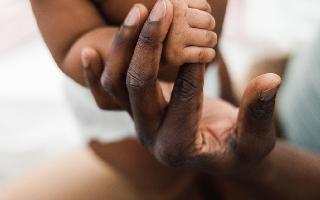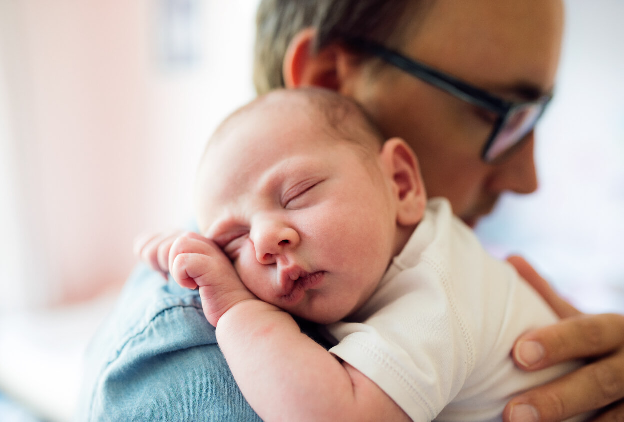
- No win. No fee.
- No hidden costs
- 100% risk-free, only pay if you win
- Home >
- Insights >
- Birth Injuries >
- Spotting the signs that your child has Erb’s Palsy
About the Author
Jessica Wright
Medical Negligence Solicitor - LLB (Hons) Anglia Ruskin University
Read more about Jessica »The effects of Erb’s Palsy can range from minor and manageable damage to the shoulder and arm, to completely debilitating paralysis of the affected upper limb.
Depending on the extent of the damage to a child’s brachial plexus nerves during delivery, the condition may completely heal on its own or with some physiotherapy, or it may be more permanent and leave a life-long disability that will limit arm function for life.
However, before it can be determined how severely the nerves have been damaged, Erb’s Palsy must be identified by either a healthcare professional, parent or caregiver. While in many cases the condition is immediately evident, it is possible that it can take time for the damaged nerves to die, at which point the impact then becomes more obvious.
If you are concerned that your newborn might be affected by Erb’s Palsy or a similar condition, here we will outline what signs to look out for and, if they do, how to initiate a birth injury claim following an act of medical negligence.
Erb’s Palsy is a form of obstetric brachial plexus disorder, caused by damage to the nerves of the shoulder during birth. Estimates suggest that between one and two babies out of 1,000 will be born with the condition.
During a difficult birth, often where there is shoulder dystocia, it is possible for the nerves in the baby’s shoulder to be stretched and, in the worst-case scenario, torn. There are several ways this can happen, such as the baby’s shoulder becoming stuck against the mother’s pelvic bone, or excessive pressure placed on their raised arms during a breech delivery.
The extent of the damage to the nerves will depend on the amount of force placed on the baby’s shoulder, and how long the stretching lasts. If it is minimal and brief, it is likely that the damage will completely heal in a matter of months.
However, if the pressure is more severe and lasts longer, it could cause the nerves to tear and rupture. This might cause irreparable damage which will limit the movement of the arm and its potential to grow for the rest of the child’s life.
If you would like to learn more about Erb’s Palsy and the impact that it can potentially have on someone’s life, you can read more here.
As we highlighted earlier, because the damage to the shoulder is caused at birth, it is quite possible that the condition will be identified by the midwife, obstetrician or another healthcare professional straight away.
However, in some circumstances, it is possible that the damage will only become more apparent sometime after the birth. If this is the case, there are several signs that can suggest to the baby’s parents or caregivers that one of the babies arms is not functioning or developing as it should.
Spotting the signs of Erb's Palsy
1. Lack of arm movement
Although motor control is limited in newborns, they do move their arms around to an extent immediately after birth and the following days.
If one arm is not moving as actively as the other, or is not moving at all, this can indicate weakness or paralysis, a strong sign of Erb’s Palsy.
3. Abnormal arm positioning
If the baby’s arm is in an unusual position in comparison to the other arm, it could be a sign that they have Erb’s Palsy.
A common example of abnormal arm positioning is known as ‘the waiter’s tip’. When your child’s arm hangs loosely and is bent at the elbow, turned in, and held towards their body. Meanwhile, their hand is flexed back with their wrist turned and palm facing upwards.
Other instances include if your baby’s arm hangs by the side and is rotated inwards, or their arm is pronated, with their palm facing down or back.
5. Poor grip
When you place something in your baby’s hand, such as your finger, you should expect their grip to be quite tight, even at a very early age.
If their grip is weak or they do not attempt to grip the object at all, then that is an indication of the nerve damage associated with Erb’s Palsy.
6. Associated torticollis
Torticollis is when a baby’s head is definitively tilted towards one side, while their face is turned to look towards the other side. This is due to tightness of the muscles on one side of the neck.
This can be a signal of Erb’s Palsy as, when the damage is done to the baby’s arm during birth, it is possible that the damage will extend across the baby’s shoulder and neck. Therefore, if they demonstrate torticollis, it is possible that this is a consequence of a shoulder injury sustained during birth.
8. Lack of feeling
Alternatively, Erb’s Palsy can also result in a loss of feeling in the affected area. If your baby does not react to you touching or squeezing their shoulder at all, this could be a sign of nerve damage. You can test for this by exposing the area to a moderate amount of heat or cold, or giving your child a gentle pinch.
If you have noticed any of the above signs in your child, then it is worthwhile mentioning this to your midwife or health visitor when they perform their typical visits for the first couple of years of your baby’s life, or you go for a check-up with your GP.
They will then be able to examine your child and determine if the symptoms are indicative of Erb’s Palsy or another condition, or give you the reassurance that there is nothing seriously wrong.
We hope that this article proves helpful if you notice anything odd or unexpected from your baby’s arm movements or behaviours in the period following their birth.
It is understandable that these might not be apparent immediately as you get to know your child, or if this is your first child and you are unsure what is considered ‘normal’ or ‘abnormal’ behaviour in a baby. But depending on the extent of the damage done to the brachial plexus nerves, Erb’s Palsy can have a decisive impact on your child’s future, so it is essential that any indicators are spotted and discussed with your healthcare providers.
The scope of Erb’s Palsy is very wide. Some will only endure a transient weakness of the arm, elbow or shoulder, which heals over time or in response to physiotherapy. On the other end of the spectrum, they could be left completely unable to use one of their arms or hands – a huge burden for the remainder of their life.
Things that most people take for granted – opening packages, driving, lifting shopping bags, bathing, dressing – can become a real struggle for these individuals, and puts pressure on their loved ones to help them manage these everyday tasks.
And, if this is all the result of a healthcare professional breaching their duty of care towards you and your child, then we can help you to obtain the compensation required to help to relieve this burden and enable your child to live as comfortable, independent and fulfilling a life as possible.
Our solicitors at Gadsby Wicks are true specialists in guiding birth injury claims to successful outcomes for our clients. We will investigate all available evidence and interview trusted medical experts to build a strong understanding of what happened to your child and, if negligence occurred, pursue a fitting amount of compensation to meet their needs.
If you would like to make a claim, or would like to learn more about our focused, comprehensive approach to medical negligence, please get in touch with our team today.
Disclaimer
All content contained within this article is meant for general information only – this should not be treated as a substitute for medical advice from your doctor or another healthcare provider. If you require legal advice specific to your situation, please contact our team directly.
Gadsby Wicks is not liable for any diagnosis made from the content of this article, nor does it endorse any service or external site linked to within the article.
Always consult your GP if you are concerned about your health and wellbeing, or speak to us if you require legal advice.
Additional Resources
Making it easier to connect people with the right resources for their needs: Birth Injury Center
This link will bring you to a third party website, owned and operated by an independent party over which Gadsby Wicks has no control. Therefore, we cannot be responsible for the protection and privacy of any information which you provide whilst visiting such sites and such sites are not governed by our privacy policy. You should exercise caution and look at the privacy statement or policy applicable to the website in question.


Understanding the impact of Erb’s Palsy




 Back to top
Back to top